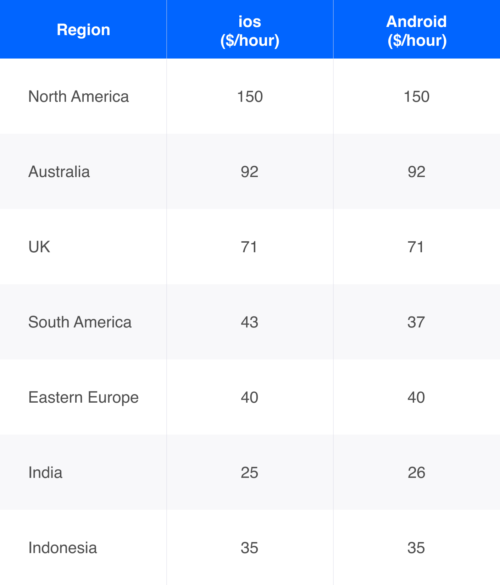Assess the hazards and risks in your workplace and implement an effective control program. It is also essential to be sure that any changes in the workplace have not introduced new hazards or changed hazards that were once ranked as lower priority to a higher priority. The organization has to determine which technique will work best for each situation.
For example, risk identification may include assessing IT security threats such as malware and ransomware, accidents, natural disasters and other potentially harmful events that could disrupt business operations. Risk management is the process of identifying, assessing and controlling financial, legal, strategic and security risks to an organization’s capital and earnings. These threats, or risks, could stem from a wide variety of sources, including financial uncertainty, legal liabilities, strategic management errors, accidents and natural disasters. Web-based risk matrices can automatically calculate a hazard’s risk after you choose its probability and severity, saving you time. After identifying steps to mitigate the risk, safety software can even help you take your assessment a step further by allowing you to calculate the hazard’s residual risk after controls are set. Cyberthreats are the particular dangers that create the potential for cyber risk.
What are the benefits of using a 3×3 risk matrix?
Ranking hazards requires the knowledge of the workplace activities, urgency of situations, and most importantly, objective judgement. Investors and businesses perform regular “check-ups” or rebalancing to make sure their portfolios have a risk level that’s consistent with their financial strategy and goals. Political risk is the risk an investment’s returns could suffer because of political instability or changes in a country. This type of risk can stem from a change in government, legislative bodies, other foreign policy makers, or military control. Also known as geopolitical risk, the risk becomes more of a factor as an investment’s time horizon gets longer.
Older investors would have a different risk tolerance since they will need funds to be more readily available. Time horizon and liquidity of investments is often a key factor influencing risk assessment and risk management. The greater the amount of risk an investor is willing to take, the greater the potential return. Risks can come https://www.globalcloudteam.com/ in various ways and investors need to be compensated for taking on additional risk. Treasury bond is considered one of the safest investments and when compared to a corporate bond, provides a lower rate of return. Because the default risk of investing in a corporate bond is higher, investors are offered a higher rate of return.
What are the drawbacks to using a 4×4 risk matrix?
While these examples are meant to assist in the classification process, the unique context of a particular dataset or use case may impact the overall classification category. If in doubt as to the appropriate classification category for a particular set of information, data owners should contact IS&T’s Information Security Office for assistance. We all face risks every day—whether we’re driving to work, surfing a 60-foot wave, investing, or managing a business. The following chart shows a visual representation of the risk/return tradeoff for investing, where a higher standard deviation means a higher level or risk—as well as a higher potential return. Counterparty risk is the likelihood or probability that one of those involved in a transaction might default on its contractual obligation. Counterparty risk can exist in credit, investment, and trading transactions, especially for those occurring in over-the-counter (OTC) markets.

Risk analysis involves establishing the probability that a risk event might occur and the potential outcome of each event. Risk evaluation compares the magnitude of each risk and ranks them according to prominence and consequence. If an unforeseen event catches your organization unaware, the impact could be minor, such as a small impact on your overhead costs. In a worst-case scenario, though, it could be catastrophic and have serious ramifications, such as a significant financial burden or even the closure of your business. Too small or too large a matrix may not give a sufficient, or too vague of an assessment, so for many projects, a 4×4 matrix is “just right.” In addition, we’ve also written a separate article on assessing risks of employee exposures to COVID-19 in the workplace.
Classification Examples for High Risk Applications
Risk stratification has enabled our practice to provide risk-stratified care management. Because one of the risk events was rated as “High Risk”, the overall risk level for the system is High. The most basic—and effective—strategy for minimizing risk is diversification. A well-diversified portfolio will consist of different types of securities from diverse industries that have varying degrees of risk and correlation with each other’s returns. Credit risk is the risk that a borrower will be unable to pay the contractual interest or principal on its debt obligations. This type of risk is particularly concerning to investors who hold bonds in their portfolios.

Bonds with a lower chance of default are considered investment grade, while bonds with higher chances are considered high yield or junk bonds. Investors can use bond rating agencies—such as Standard and Poor’s, Fitch and Moody’s—to determine which bonds are investment-grade and which are junk. While it is true that no investment is fully free of all possible risks, certain securities have so little practical risk that they are considered risk-free or riskless. Discover how a governance, risk, and compliance (GRC) framework helps an organization align its information technology with business objectives, while managing risk and meeting regulatory compliance requirements. Better manage your risks, compliance and governance by teaming with our security consultants. Simplify how you manage risk and regulatory compliance with a unified GRC platform fueled by AI and all your data.
What types of hazards are there?
Unsystematic risk, also known as specific risk or idiosyncratic risk, is a category of risk that only affects an industry or a particular company. Unsystematic risk is the risk of losing an investment due to company or industry-specific hazard. Examples include a change in management, a product recall, a regulatory change that could drive down company sales, and a new competitor in the marketplace with the potential to take away market risk level definition share from a company. Investors often use diversification to manage unsystematic risk by investing in a variety of assets. Risk mitigation refers to the process of planning and developing methods and options to reduce threats to project objectives. A project team might implement risk mitigation strategies to identify, monitor and evaluate risks and consequences inherent to completing a specific project, such as new product creation.

When adequate information is available, physiologically based pharmacokinetic (PBPK) modeling and benchmark dose (BMD) modeling have also been used as an adjunct to the NOAEL/UF approach in deriving MRLs. “Black swan” events are rare, unpredictable, and high-impact occurrences that can have significant consequences on financial markets and investments. Due to their unexpected nature, traditional risk management models and strategies may not adequately account for these events.
Moderate Risk
A successful risk assessment program must meet legal, contractual, internal, social and ethical goals, as well as monitor new technology-related regulations. Three important steps of the risk management process are risk identification, risk analysis and assessment, and risk mitigation and monitoring. Companies can create these controls through a range of risk management strategies and exercises.
- But for most institutions, a maturity-based approach can turn into an unmanageably large project, demanding that all aspects of an organization be monitored and analyzed.
- While financial risk is concerned with the costs of financing, business risk is concerned with all the other expenses a business must cover to remain operational and functioning.
- The aim of the risk assessment process is to evaluate hazards, then remove that hazard or minimize the level of its risk by adding control measures, as necessary.
- This means an organization prioritizes investment based on a cybersecurity program’s effectiveness in reducing risk.
- In general, as investment risks rise, investors expect higher returns to compensate for taking those risks.
- For example, risk identification may include assessing IT security threats such as malware and ransomware, accidents, natural disasters and other potentially harmful events that could disrupt business operations.
- Speed insights, cut infrastructure costs and increase efficiency for risk-aware decisions with IBM RegTech.
A hazard is any source of potential damage, harm or adverse health effects on something or someone. Risk assessment – the overall process of hazard identification, risk analysis, and risk evaluation. But it can’t be ignored that crises—and missed opportunities—can cause organizations to fail. By measuring the impact of high-impact, low-likelihood risks on core business, leaders can identify and mitigate risks that could imperil the company. What’s more, investing in protecting their value propositions can improve an organization’s overall resilience. In the past, organizations have relied on maturity-based cybersecurity approaches to manage cyber risk.
Low Risk
When risks are shared, the possibility of loss is transferred from the individual to the group. A corporation is a good example of risk sharing — a number of investors pool their capital and each only bears a portion of the risk that the enterprise may fail. By using a web-based matrix and assessment tool, it also becomes easier to share them across your organization’s locations. Keeping records of your assessment and any control actions taken is very important. It is important to remember that the assessment must take into account not only the current state of the workplace but any potential situations as well.